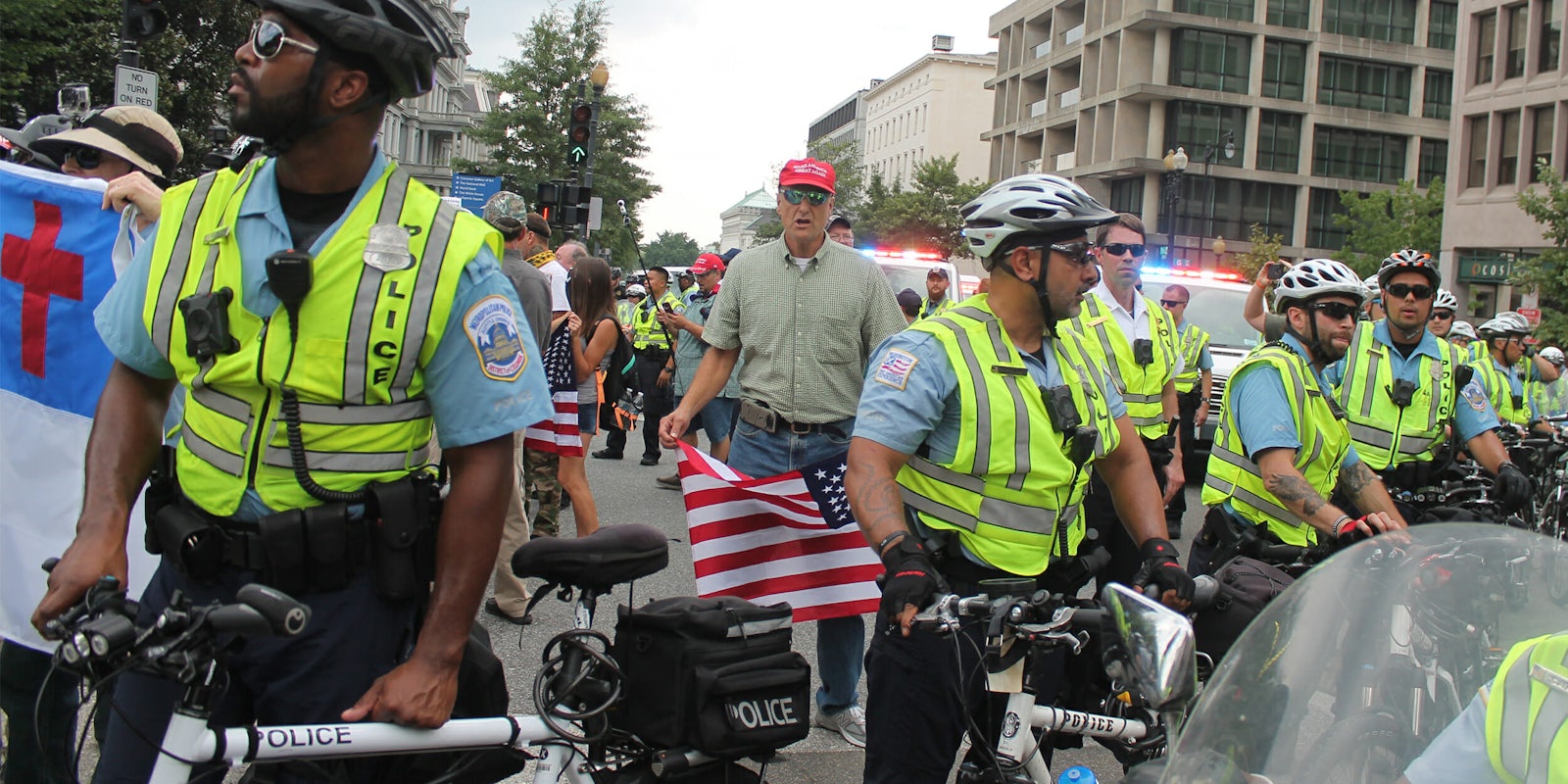Opinion
Since the election of President Donald Trump in 2016, the “alt-right” has received much international attention. We have seen white men pouring white milk on themselves in the name of racial purity, and we have read about deeply violent acts like the man who stabbed and killed two people on a Portland train who were defending the target of the killer’s racial slurs. Then there was Unite the Right rally in Charlottesville, a horrifying spectacle of white supremacists carrying weapons and swastikas marching through the city over a fallen Confederate monument. In many ways, Trump’s consistent dog-whistles and policies against marginalized people would make you believe that the “alt-right” is only getting started.
Or, you could argue, the sound of that momentum is the alt-right’s death knell.

No doubt, in 2018, there were more moments of spectacle and violence that the alt-right’s ideologies produced: the July stabbing death of Nia Wilson by a suspected alt-righter in Oakland; violent clashes in Portland and New York City with the Proud Boys; the killing of 17 students at Marjory Stoneman Douglas High School by racist, anti-Muslim shooter, Nikolas Cruz; the strange emergence of Kanye West as a visible Trump supporter; the October shooting at Tree of Life Synagogue in Pittsburgh by a shooter with alt-right leanings.
But while the alt-right has proven itself as a movement reliant on acts of violence to gain notoriety, it has also suffered consequences. And such consequences have hindered its power and stuck fear among its followers.
After violent clashes between the supporters of alt-right thought leader Richard Spencer and protesters at Michigan State University in March, Spencer posted a video to YouTube where he canceled the rest of his college speaking tour. “I really hate to say this, and I definitely hesitate to say this,” he said. “Antifa is winning to the extent that they’re willing to go further than anyone else, in the sense that they will do things in terms of just violence, intimidating, and general nastiness.”
2018 has also been a year of rampant doxing of the alt-right, which has led to many of them losing employment. This scrutiny has perhaps led to the movement being unable to gather large numbers for many of its demonstrations. At this year’s Unite the Right 2 rally in Washington D.C., the crowd of a few dozen alt-right supporters was far outnumbered by counterprotesters. The recent Proud Boys rally in Philadelphia also had dismal attendance numbers, and some were even denied cab service by drivers as they attempted to leave the demonstration.
Furthermore, the alt-right has lost a lot of money. Milo Yiannopoulos is allegedly $2 million in debt. In the past year, fundraising platforms, like Patreon, PayPal, and GoFundMe, have banned various members of the alt-right, Yiannopoulos included. Many personalities like InfoWars’ Alex Jones and Gavin McInnes of the Proud Boys have also been banned from social media platforms like Facebook, YouTube, and Twitter.
Then, there is Kanye. One of the most famous Black rappers in the world touted pro-Trump views and even attended a highly publicized meeting with the president. But after much public outcry following their chat, Kanye declared on Twitter that he was used to spread messages he didn’t believe in. Even the attention-hungry can see that not much good comes from aligning yourself with the alt-right.
To be clear, though, the alt-right isn’t a fad that burst and faded over the past few years. The movement can be traced back to 2008, utilizing online propaganda, white male disillusionment, and acts of white supremacist heroism meant to inspire youth. Alt-righters congregated and ideologized on 4chan, 8chan, Reddit, and Twitter for years before they made national headlines. “The alt-right is definitely a re-branding of white supremacy for the digital generation,” Mark Potok of the SPLC told the Daily Dot in 2016.
The movement also has given hate a mouthpiece and emboldened it. Hate crimes continue to rise in this country, and according to a recent study, there are roughly 24 million Americans who have alt-right beliefs. But for every active alt-righter, there are many more anti-fascists and generally kind and caring people working to curb the appeal of an alt-right brand of fascism and racism.
Places like Haymaker Gym in Chicago—which hosts anti-fascist, self-defense training—campus groups campaigning against alt-right speakers, and organizations suing alt-right leaders over their actions, are doing the day-to-day work. Then there are the masses who show up in protest, who report harassers on Twitter, who organize groups and GoFundMes to ensure justice is served and bigotry is shut down. The left’s ability to organize and focus will defeat the alt-right. Even Spencer has admitted as much.
In 2018, we made steps toward showing the alt-right that we won’t tolerate their lightly disguised, hate-mongering rhetoric, but in 2019, we can do better by expanding our networks of organizing and understand that beliefs held by the alt-right don’t just go away. Moving forward, we must find new ways to build community, share information, and have conversations with the complacent people around us. We have to think beyond the political theater of rallies, demonstrations, and street scuffles. We have to use our voices and show that we really are “willing to go further than anyone else” to stamp out hate.
Disclosure: Milo Yiannopoulous was the founder of the Kernel, a publication the Daily Dot acquired in January 2014.


